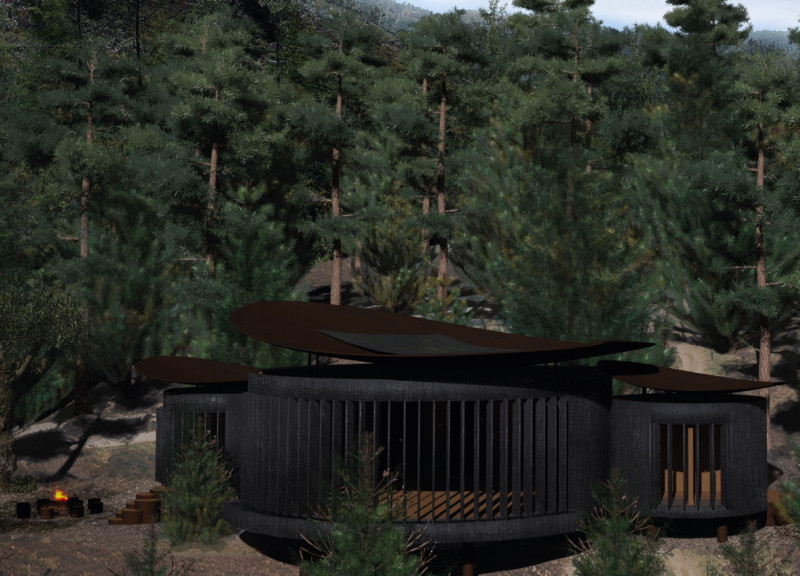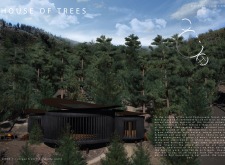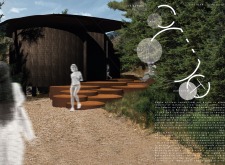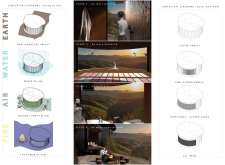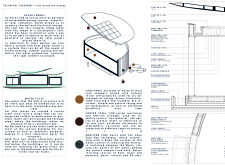5 key facts about this project
The overall design features a circular form, which not only symbolizes organic harmony but also promotes fluid movement around the space. The building is constructed using a variety of locally sourced materials, including cork panels for insulation, Corten steel for structural elements, maritime pine for finishing, and transparent polycarbonate sheets to maximize natural light. Eucalyptus and olive tree elements further enhance the project's environmental footprint, aligning with the principles of sustainable architecture.
Unique Design Approaches
One of the notable aspects of the House of Trees is its biophilic design approach. By emphasizing natural materials and encouraging landscaping within the architectural elements, the project fosters a continuous relationship between indoor and outdoor spaces. The structure's circular layout invites occupants to engage fully with the environment, creating opportunities for communal living without compromising individual privacy.
The integration of an efficient water management system and solar energy solutions demonstrates a commitment to sustainability. Rainwater harvesting and the strategic placement of solar panels optimize resource use, reducing overall environmental impact. These systems underscore the project's functionality and align it with contemporary architectural practices aimed at minimizing carbon footprints.
Interior design choices also reflect this ethos. Minimalist elements and flexible spaces enable occupants to adjust their environment according to their needs, enhancing usability while creating a warm and inviting atmosphere. The use of walls made from cork and wood instills a natural warmth in the living area, promoting comfort.
Environmental Integration and User Engagement
A distinct feature of the House of Trees is its emphasis on user engagement with the surrounding natural landscape. The architectural design frames views of the forest strategically while providing access to outdoor facilities that encourage exploration and interaction with nature. Stepping stones made from Corten steel lead to various amenities, promoting an integrative experience between the occupants and their environment.
The combination of functional living spaces with thoughtful interaction points reflects a tailored approach to architectural design. Each component of the House of Trees plays a role in reinforcing the philosophy that human life can coexist harmoniously with nature.
For further insights into the architectural design, including architectural plans and sections, we invite readers to explore the comprehensive project presentation. Review the architectural ideas and details to gain a deeper understanding of this distinctive approach to modern living.


